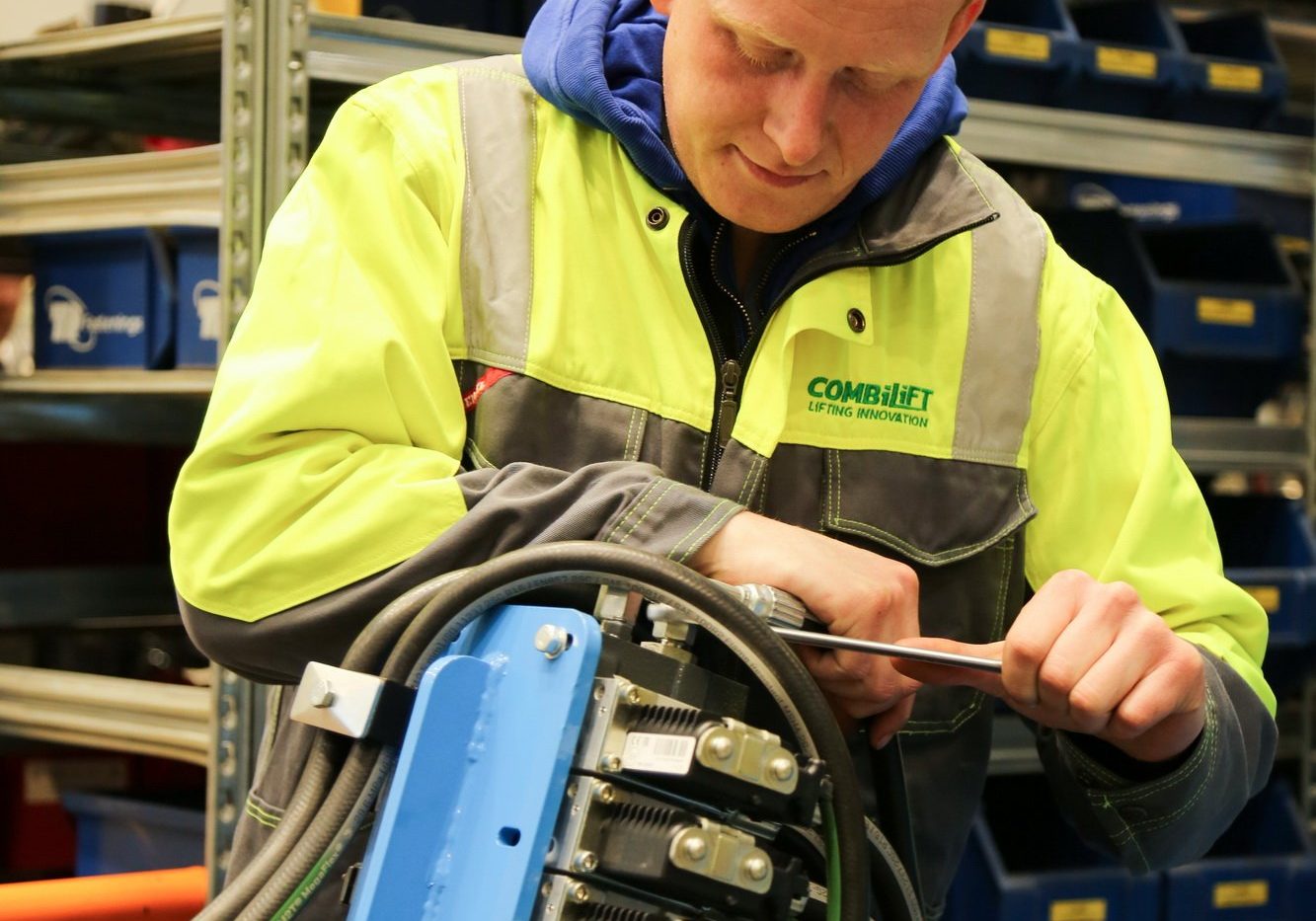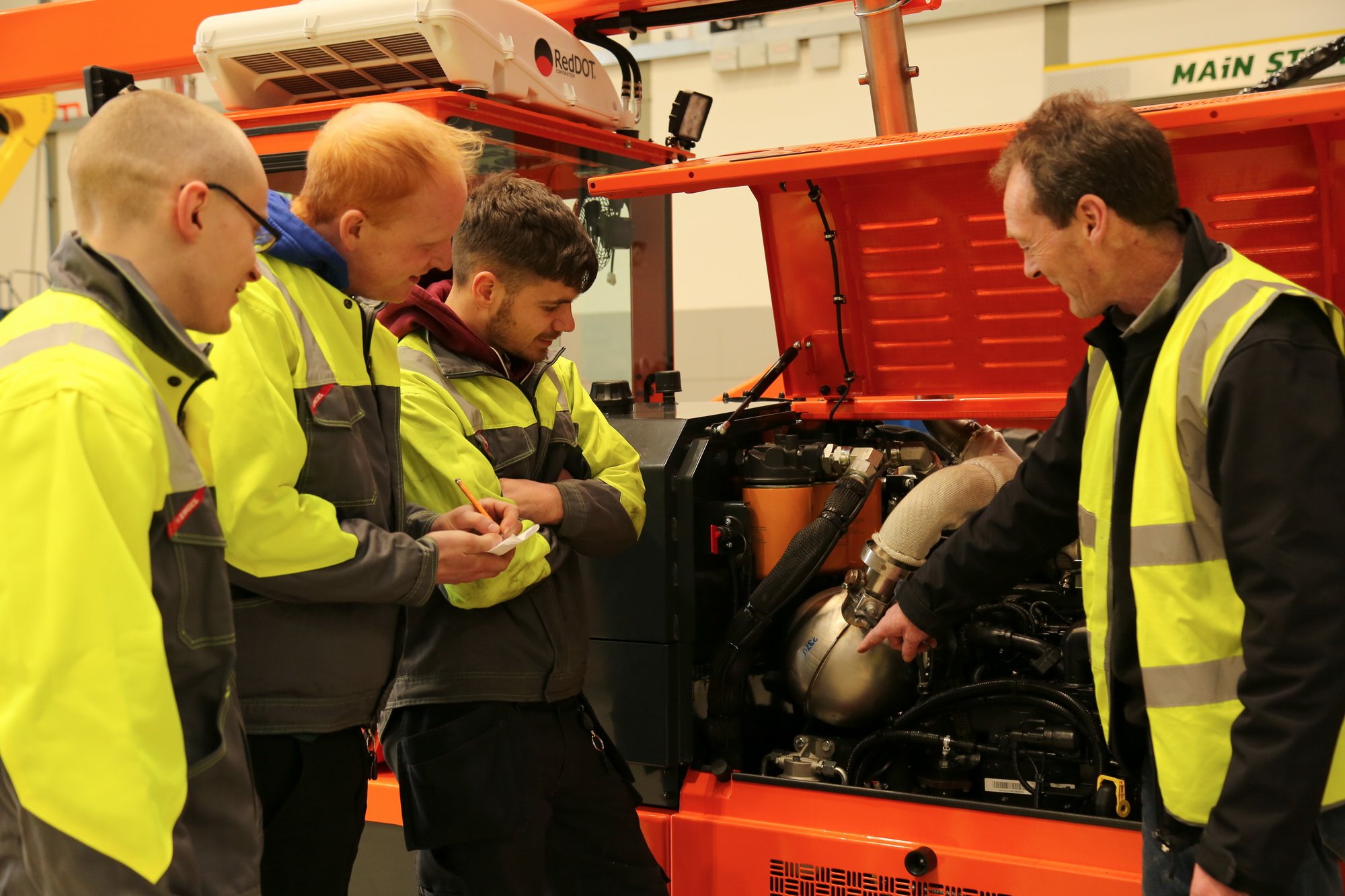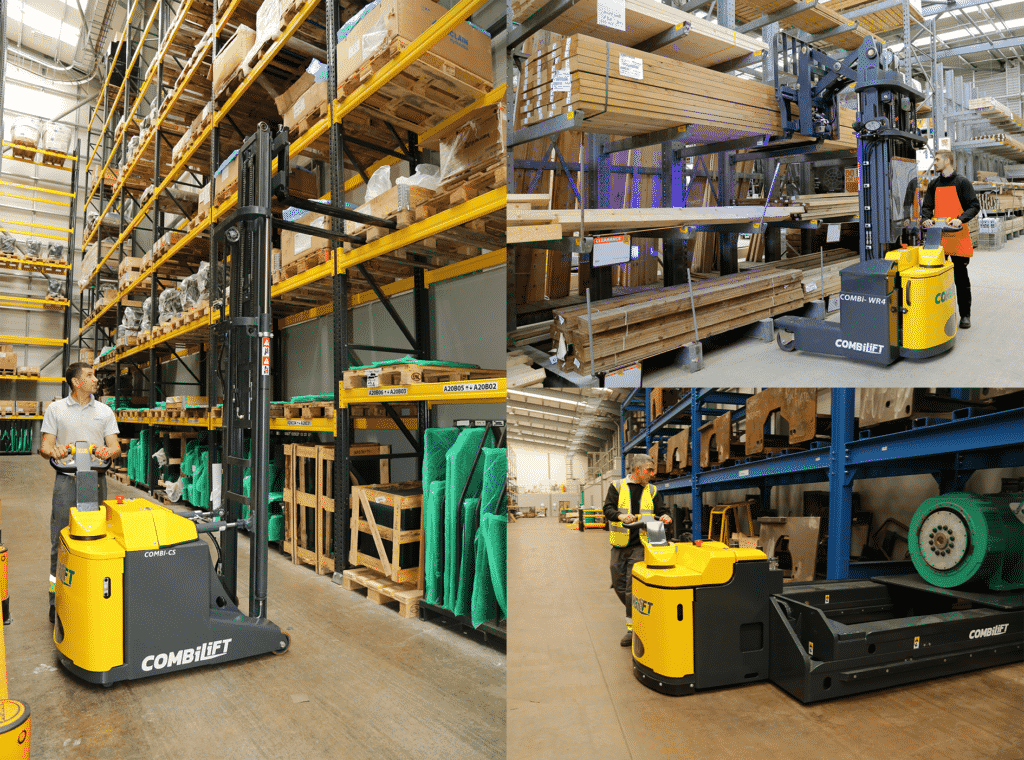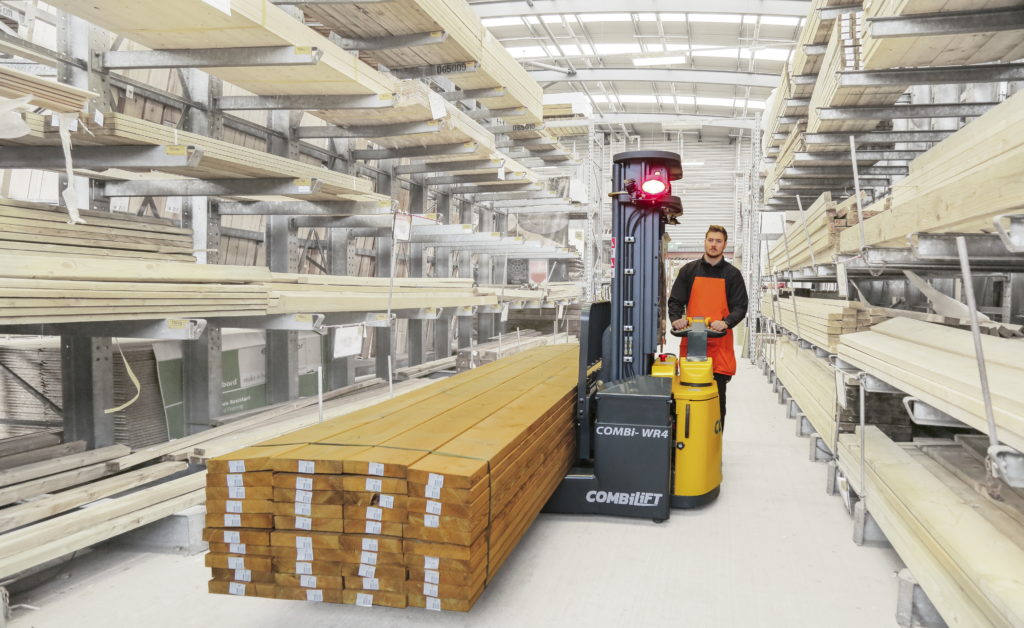Here at Combilift, safety around forklift trucks is our priority every day, and the National Forklift Safety Day (NFSD) on June 8th is a further opportunity to focus on how you can reduce the risks of accidents when using materials handling equipment. We are marking this year’s NFSD by looking at how you can ensure safer working practices with pedestrian trucks – for operators as well as for non-operators. Our award-winning pedestrian models feature our unique, patented multi-position tiller arm which enables push button rotation of the rear wheel parallel to the chassis and back, allowing the operator to remain in the safest position at the side of the unit when placing and picking in narrow aisles. This reduces any crush risk, and its excellent visibility guarantees the safety of those nearby. The 2021 NFSD also marks the official launch of the UK Material Handling Association, formed by the merger of BITA and the FLTA.
For this year’s National Forklift Safety Day, Combilift would like to address the topic of safety when using pedestrian operated trucks in general and also more specifically how the features we incorporate into our pedestrian models can further reduce the risks of accidents.
Pedestrian pallet and stacker trucks have become increasingly prevalent in warehousing operations, DIY and retail outlets over the years and are replacing ride-on forklifts for a number of good reasons – a key one of which is safety – for the operator as well as for other personnel, customers or visitors who may be nearby. Their compact footprint and lower cost compared to ride-on trucks have also contributed to their popularity.
These trucks were once regarded as having limited use – mainly for handling relatively light, palletised loads. But new designs and technological advances, such as those pioneered by Combilift, have made them a much more versatile solution for various applications across a wide range of industry sectors. Many of them can now lift and carry longer, heavier loads, functioning in essence as larger forklifts, and this has further driven market demand and therefore growth for these models. Our pedestrian range now includes the Combi-WR reach stacker, its multidirectional counterpart the Combi-WR4 and the Combi-CS counterbalance stacker. Another model, the Combi-PPT powered pallet truck, can be supplied with a lift capacity of 16 t, to enable even very heavy and bulky loads to be safely and easily moved around the confined areas of a manufacturing facility for example.
Operating at walking pace is inherently safer than the speeds that can be achieved with ride-on forklifts, and as operators are closer to the loads they are handling, they are more aware of their working environment. This tends to lead to more careful behaviour compared to when they are in a cab, higher off the ground and therefore further removed from their immediate surroundings – physically as well as psychologically. They temptation to “put their foot down” is also removed.
But even if these trucks may be smaller than their ride-on counterparts, they are nevertheless heavy pieces of equipment that can pose just as much danger to nearby pedestrians if a collision does occur. For this reason, whatever MHE is being used, creating and promoting a safety strategy across the workforce encourages a culture of vigilance which ensures that risks are kept to a minimum. Appropriate operator training and refresher courses should be carried out at regular intervals. It is human nature to become over- familiar with one’s surroundings, and this applies to other employees who are working in the vicinity. They also need to be made aware on a regular basis of how to keep themselves safe – by not cutting corners when it comes to keeping to authorised walkways for example.
Other basic safety rules that should be observed when operating any forklifts also apply to pedestrian models. Loads should be carried close to the ground and operators should not move around with elevated forks. Don’t be tempted to lift more than the specified capacity. Never allow operation by unauthorised personnel. Carry out the usual checks at the start of each shift to ensure that the machine is in good, safe working order. And never use trucks to “give people a lift” on the forks unless specially modified equipment to carry personnel has been fitted and approved.
Safer on foot
A potential danger for operators posed by some brands of pedestrian trucks is due to the design, particularly the position of the tiller arm at the rear of the unit. This was something we addressed when embarking on the development our first Combi-WR “Walkie Reach” truck around ten years ago. To drastically reduce the risk of an operator being crushed or trapped between the truck and racking, we came up with the unique, patented multi-position tiller arm which is a key feature of all of our pedestrian models. Its contribution to safer working practices was recognised in 2019 when it won the Industrial Vehicles Category of the BITA (British Industrial Truck Association) Design4Safety Awards.
The tiller can be turned to the left or right of the truck and enables push button rotation of the rear wheel parallel to the chassis and back again. It allows the operator to remain in the safest possible position when picking and placing products in narrow aisles – at the side of the truck rather than at the rear. As well as keeping the operator safe, their sight line is not impeded by having to look through the mast, guaranteeing full visibility of the load, the forks, the surroundings and of course any people. The tiller arm also incorporates a monitor which clearly displays the rear wheel position.
So if you are using pedestrian trucks, or plan to in the future, following basic safety guidelines will protect your employees and enable you to reap further operational benefits from these increasingly popular handling solutions.



















